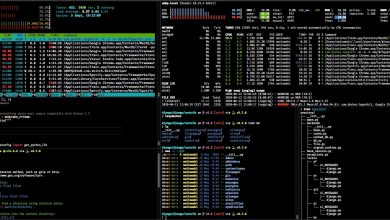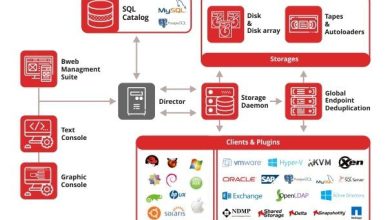Emerging Trends in Computer Networking

“`html
body {
font-family: Arial, sans-serif;
line-height: 1.6;
margin: 0;
padding: 0;
background-color: #f4f4f4;
color: #333;
font-size: 18px;
}
.container {
width: 80%;
margin: 0 auto;
padding: 20px;
background-color: #fff;
box-shadow: 0 0 10px rgba(0, 0, 0, 0.1);
}
h1, h2, h3 {
color: #333;
}
h1 {
font-size: 2.5em;
margin-bottom: 0.5em;
}
h2 {
font-size: 2em;
margin-bottom: 0.5em;
}
h3 {
font-size: 1.5em;
margin-bottom: 0.5em;
}
p {
margin-bottom: 1em;
}
ul {
list-style: disc;
margin-left: 2em;
margin-bottom: 1em;
}
.wp-block-table {
border-collapse: collapse;
width: 100%;
margin-bottom: 1em;
}
.wp-block-table th, .wp-block-table td {
border: 1px solid #ddd;
padding: 8px;
text-align: left;
}
.wp-block-table th {
background-color: #f0f0f0;
}
Emerging Trends in Computer Networking: A Glimpse into the Future
Introduction
The world of computer networking is in a constant state of evolution, driven by the ever-increasing demand for faster, more reliable, and secure connectivity. As we step further into the digital age, several emerging trends in computer networking are poised to reshape the way we connect, communicate, and interact with the world around us. From the rise of artificial intelligence (AI) in network management to the transformative power of 5G and the edge computing revolution, the future of networking is brimming with exciting possibilities.
In this article, we will delve into the key trends shaping the networking landscape, exploring their impact on businesses, individuals, and the broader technological ecosystem. We’ll examine how these innovations are enhancing network performance, optimizing resource utilization, and paving the way for new applications and services that were once considered the realm of science fiction.
Artificial Intelligence (AI) and Machine Learning (ML) in Networking
Artificial Intelligence and Machine Learning are rapidly making their way into the heart of network management. AI-powered tools are revolutionizing the way networks are designed, deployed, monitored, and optimized. These intelligent systems can analyze vast amounts of network data, identify patterns, and make proactive decisions to enhance network performance and security.
- Predictive Maintenance: AI algorithms can predict potential network issues before they occur, allowing engineers to take preemptive action and prevent downtime.
- Automated troubleshooting: When problems do arise,AI can quickly diagnose the root cause and suggest or even automatically implement solutions,significantly reducing troubleshooting time.
- Network Security: AI is being used to detect and respond to cyber threats in real time. By analyzing network traffic for anomalies, AI-powered security systems can identify and block malicious activity before it causes damage.
- optimized Resource Allocation: AI can dynamically allocate network resources based on real-time demand, ensuring that critical applications receive the bandwidth they need.
Such as, AI can help detect DDoS attacks. In the past, we would need to set static rules for traffic analysis. With AI, the system can learn to differentiate between legitimate spikes in user activity and malicious DDoS attacks.
Edge Computing: Bringing Intelligence Closer to the Source
Edge computing is a paradigm shift in the way data is processed and delivered. Instead of relying solely on centralized cloud servers, edge computing brings computation and data storage closer to the source of data generation, such as IoT devices, smartphones, and local servers. This decentralized approach offers numerous benefits:
- Reduced Latency: By processing data closer to the source, edge computing minimizes the time it takes to transmit data to and from the cloud, resulting in faster response times for applications.
- Improved Bandwidth Efficiency: Edge computing reduces the amount of data that needs to be transmitted to the cloud, freeing up bandwidth for other purposes.
- Enhanced Reliability: Edge devices can continue to operate even if the connection to the cloud is lost, ensuring business continuity.
- Improved Security and Privacy: Sensitive data can be processed and stored locally at the edge, reducing the risk of data breaches during transmission.
Edge computing is especially crucial for applications that require real-time processing,such as autonomous vehicles,industrial automation,and augmented reality.
| Sector | Edge Computing Submission |
|---|---|
| Manufacturing | Real-time defect detection in production lines |
| Healthcare | Remote patient monitoring with fast data analysis |
| Retail | Personalized in-store experiences |
The 5G Revolution: Unleashing Unprecedented Connectivity
5G, the fifth generation of cellular network technology, is poised to revolutionize the way we connect to the internet and each other. With its significantly higher speeds, lower latency, and increased capacity compared to 4G, 5G is enabling a new wave of innovative applications and services.
- Enhanced Mobile Broadband: 5G provides significantly faster download and upload speeds, making it possible to stream high-definition video, download large files in seconds, and enjoy seamless online gaming experiences.
- Massive IoT Connectivity: 5G can support a massive number of connected devices together, making it ideal for the growing Internet of Things (IoT) ecosystem. This capability is crucial for smart cities,industrial automation,and other applications that rely on a vast network of sensors and devices.
- Ultra-Reliable Low-Latency Communications (URLLC): 5G’s low latency and high reliability are essential for mission-critical applications, such as autonomous vehicles, remote surgery, and industrial control systems.
- Network Slicing: 5G allows network operators to create virtualized, independant network slices that can be customized to meet the specific needs of different applications and services.
5G is an significant enabler of technologies like IoT, Edge Computing and even Artificial Intelligence, by providing the necesary connectivity.
Software-Defined Wide Area Networking (SD-WAN)
SD-WAN is transforming the way businesses manage their wide area networks (WANs). By decoupling the network control plane from the underlying hardware, SD-WAN enables organizations to centrally manage and optimize their WAN connections, nonetheless of the type of transport being used (e.g., MPLS, broadband, LTE).
- Improved Agility: SD-WAN makes it easier to provision new WAN links, adjust bandwidth allocation, and implement network policies across the entire network.
- Cost Savings: SD-WAN allows organizations to leverage lower-cost broadband connections along with or instead of traditional MPLS circuits, reducing overall WAN costs.
- Enhanced Performance: SD-WAN can intelligently route traffic over the most optimal path, improving application performance and user experience.
- Simplified Management: Centralized management and orchestration make it easier to monitor and troubleshoot the WAN.
SD-WAN enables organizations




